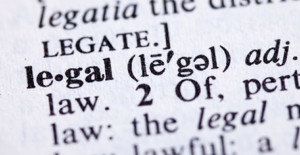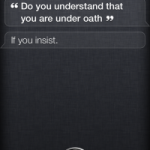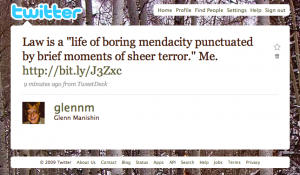A sample text widget
Etiam pulvinar consectetur dolor sed malesuada. Ut convallis
euismod dolor nec pretium. Nunc ut tristique massa.
Nam sodales mi vitae dolor ullamcorper et vulputate enim accumsan.
Morbi orci magna, tincidunt vitae molestie nec, molestie at mi. Nulla nulla lorem,
suscipit in posuere in, interdum non magna.
|
There’s been much press coverage of the travails of the AmLaw 100 — America’s largest law firms. Clients are aggressively pushing back against ever-increasing hourly rates and significant inefficiencies. Storied firms have been folding, merging and laying off staff and even attorneys at unprecedented levels. Electronic discovery specialists and legal outsourcing are compressing margins for the litigation work that historically fueled big firm profits. Non-traditional legal providers are hardly faring better. Clearspire, a much-heralded pioneer of the virtual law firm concept, closed shop in June.
Yet at the same time — and perhaps as a consequence — the market for legal startups is booming. VentureBeat commented that the profession’s ongoing transition is “fueling innovation throughout the entire industry.” In 2009, just 15 legal services startups were listed on AngelList. There are now more than 400 startups and almost 1,000 investors. A whopping $458 million was invested into legal startups last year, a remarkable increase from the $66 million that went into the space in 2012. Legal entrepreneurs are focused on two different objectives: helping lawyers do their work better, faster and cheaper, and making the law more accessible, sometimes eliminating the need for lawyers altogether.

It is the second, consumer-facing portion of this trend that portends a fundamental change in the legal market. By giving both individual and corporate consumers the resources to do it yourself, today’s crop of disruptive legal startups is laying the groundwork for an era in which software tools, social sharing and document comparison-assembly programs are positioned to replace attorneys’ stock in trade, namely reuse of contracts and other legal “forms.”
A century ago the bar protected itself with arcane Latin phrases and obscure judicial reporters. Two decades ago, it used the expense of private legal research databases like LexisNexis, an information barrier that is increasingly archaic in today’s era of Web-enabled courts and Google Scholar. With the present challenge to the largest traditional domain of legal practice — creation, revision and execution of legally binding documents — technology is breaking down walls that made have legal U.S. services unaffordable, and thus essentially unavailable, to many except the wealthy those at the opposite end of the economic spectrum who qualify for free and pro bono legal services.
Continue reading Legal Disruptions Redux

This is hilarious, and not altogether far-fetched. As the authors ask, wouldn’t it be interesting if Siri, the most famous example of artificial intelligence, had her deposition taken in litigation against Apple claiming the technology did not work as advertised?
Courtesy of my friends at Gallivan, White & Boyd, P.A. and their Abnormal Use blog. See also Lawsuit Claims Siri Doesn’t Know What She’s Talking About | Forbes.
As a recent story from the The Washington Post illustrates well, “tradition” is a gating factor in the ongoing transformation of the legal industry. Despite the highly conservative nature of courts, bar associations and attorneys, however, in the post-Great Recession legal market of 2013, technology and changing values are rapidly disrupting traditional legal services.
My colleague and friend Jonathan Askin, Founder of the Brooklyn Law Incubator & Policy Clinic, hosted a seminar on legal start-ups in late August. Many of the companies highlighted there are focused on low-hanging fruit, taking the trend started by LegalZoom of moving do-it-yourself work product to consumers into spaces that for decades have remained buttoned-up by prohibitions against “unauthorized practice of law” and the resistance of lawyers to allowing clients document control. (LegalZoom itself has been challenged by bar groups and class action plaintiffs in North Carolina, Connecticut, Missouri and California for allegedly engaging in the practice of law, a classic and anticompetitive use of regulations designed to protect consumers, not prohibit new business models.) Like taxi-hailing companies Uber and Sidecar, legal start-ups thus face opposition from incumbents who are well-situated to employ archaic regulatory regimes to thwart new entry.
Nonetheless, the four emerging firms Askin profiled make a persuasive case that the guild-like barriers which for centuries protected lawyers from competition are breaking down before our eyes.
- Shake allows consumers to create binding contracts automatically on their smartphones or tablets with a few Q&As and then sign them electronically.
- Lawdingo leverages the power of networking to connect consumers to lawyers for real-time quick (and often free) answers on a virtually unlimited number of topics.
- Caserails offers cloud-based document assembly and editing functionalities for individuals or groups, long the bane of corporate transactions.
- Priori Legal allows SMBs to select among a trusted community of lawyers for discounted or fixed-rate engagements with Web-based comparison shopping.
The best and brightest of these firms will undoubtedly rise to the top over time. Much like banks in the 1970s — when toasters as deposit “gifts” were replaced by deregulated interest rates and tellers by ATMs — legal consumers no longer care or very much appreciate the old traditions of the legal profession, especially its convoluted language, fancy office space and expensive artwork. The successful start-ups in this steady disintermediation of legal services will be the ones who recognize that they are driven by what legal transactions can and will be, not what they have been historically, and that they are technology companies solving legal problems, not legal companies trying to understand technology. Continue reading Disrupting the Legal Industry

Dewey & LeBoeuf is the biggest AmLaw 200 firm to collapse, but its not the only one. Here are 10 other law firm failures that made news in their day.
Not Too Big to Fail | American Lawyer

Almost everyone realizes there is a federally managed “Do Not Call List” governing telephone marketers (or “telemarketers”). Less well known is that a 1991 law, the Telelephone Consumer Protection Act, 47 U.S.C. § 227, prohibits telemarketing calls using autoidialers without consent, unsolicited fax advertisements and telemarketing calls to cell phones. Combining this statute with class action procedures has resulted in some substantial damages judgments over the years.
The story of TCPA this year, though, is how the Supreme Court can sometimes see a legal issue so clearly despite confusion and conflicts among the lower federal courts. Earlier this term, the Court handed down a decision in Mims v. Arrow Financial Services LLC, in which it held that TCPA lawsuits can be brought in federal court pursuant to “federal question” jurisdiction. Although that same question had been answered in the negative by several courts of appeals — based on statutory language granting TCPA jurisdiction to state courts “if [such an action is] otherwise permitted by the laws or rules ofcourt of [that] state” — the Supreme Court’s decision was unanimous, 9-0, to the contrary. According to the Court’s opinion, since Congress had not divested federl courts of jurisdiction in the TCPA, state courts did not have excluisive jurisdiction over TCPA litigation because “the grant of jurisdiction to one court does not, of itself, imply that the jurisdiction is to be exclusive.”
There are some interesting themes of judicial temperment implicit in this holding, including a tendency (regardless of conservatism or political affiliation) for the federal judiciary to aggrandize its power despite constant reiteration of the concept of limited federal jurisdiction. What is remarkable about Mims, however, is more pragmatic. Even with the class action reforms of the past decade, federal courts still do a better job, especially for defendants, of administering nationwide class action cases. The Supreme Court has now given a green light to bringing these cases in federal district court. So the back-and-forth between federal and state court that has bedeviled TCPA litigants for years is now a thing of the past. Like the old Smith Barney commercials featuring John Houseman, when the Supreme Court talks, people listen.
Cross-posted from the Duane Morris Techlaw Blog.
The LexDigerati law blog (blawg) made this compilation of “Blogs of the AmLaw 100″ earlier this week. Thanks, Adrian Dayton! Via Legal Marketing: Social Media Edition.
Well, it took a little bit of time, but the Administrative Office of the U.S. Courts has issued revised jury instructions, recommended for all federal cases, updated for today’s social media age. It’s “old wine in new bottles” — i.e., traditional rules adapted to new social networking communications — which illustrates that some things really should not (and do not) change at all where social media are concerned.
Federal Court Officials Issue Guidance on Jury Use of Blackberries, iPhones, Twitter, LinkedIn Etc. [TechLaw].
You may not communicate with anyone about the case on your cell phone, through e-mail, Blackberry, iPhone, text messaging, or on Twitter, through any blog or website, through any internet chat room, or by way of any other social networking websites, including Facebook, My Space, LinkedIn, and YouTube.

A J.D. degree is not worth what it once was as the legal industry wrestles with unprecedented business changes.
Posted via web from glenn’s posterous
I was honored this week to become the 50th lawyer interviewed via Twitter by Lance Godard of 22 Tweets. Here’s the transcript…
Today we’re tweeting with @glennm, biglaw antitrust / telecom / technology litigator turned Web 2.0 legal guru.
- @glennm thank you for joining us today on Twitter. Tell us: who is @glennm?
Good morning. Thanks for inviting me.
A tech atty. focused on comp. policy, IP & complex litigation. I help to shape the rules for new technologies, like social media.
–
- Tell us about your law practice.
My practice has broadened over the years as technology developed, from telecom to software and Internet to mobility and content….
It all started at DOJ during the US v. AT&T divestiture case, where I 1st combined antitrust with telecom regulation.
–
- That’s quite a resume! What type of clients do you represent?
Clients who can pay their bills. 😉 Seriously, my clients range from start-ups to Fortune 100 companies. Hard 2 generalize.
–
- I can imagine…. What would you say is the single most important legal issue affecting your clients?
“What am I?” Meaning, how will legislators, courts and regulators classify and treat our products and services. That affects…
…business Qs like CRM, IP protection/licensing and relations with both partners and competitors.
–
- Sounds like fascinating work. What do you tell every new client before you start working for them?
“It’s better 2 be the windshield than the bug.” Be proactive in managing the development of law & policy affecting ur space.
–
- Am sure you’ve got some great success stories: tell us about one of the more significant client representations you’ve had.
My fave is representing Netscape in 1995-96, when the FCC faced the Q of what was this new animal of the Net…
…Netscape WAS the Internet and we inaugurated a federal policy of minimal regulation that survives (in large part) today.
–
- Wow. And we all thank you for that…. Why do your clients hire you?
I’m smart, fast and strategic. I would rather solve a problem with a conf. call than write a research memo. And I try to craft…
…legal strategies for clients that further their long-term bus. plan rather than just dispose of “one off” disputes.
–
- What’s the most active area of your practice at the current time? Is that typical?
Over the past 2-3 years it’s been litigation. But the law moves in cycles, sometimes regulatory agencies r where the action is….
…and at other times firms must act to resolve issues by taking them to the courts. We’re in the latter phase in tech now.
–
- What have been the biggest changes in your practice over the past few years? Clients? Technology? The Law?
A move away from private antitrust litigation to intellectual property, as competition issues have become dominated by disputes…
…over ownership of the underlying tech methods and assets. Take VoIP (voice over Internet protocol) for one example.
–
- What will be the next great legal battle of Web 2.0? Why should we pay attention to it?
Who owns user-generated content is the big unsettled Q. It will impact users, social network providers and content creators…
…If most or all digital content can b “shared,” how do older rules re proprietary rights apply in the new environment.
–
- You’re at an AmLaw 100 firm. How does your firm’s leadership view your active Web 2.0 presence?
Mgmt. is supportive & has tasked me several times w/teaching our lawyers how to utilize and interact w/social media.
–
- That’s great. What do you say to lawyers who thumb their noses at social media and social networking?
Hope they don’t thumb noses. But lawyers are conservative creatures and thus tend not to embrace change quickly…
…I’d say that if attys. do not “get it,” they probably won’t get as many clients and work as new modes of communication develop.
–
- Your Web 2.0 presence is a mash-up of personal & professional. What are your SocMed objectives? Are you achieving them?
I’m more concerned with satisfying a passion for early adoption than forming concrete objectives from social media. My philosophy…
…has always been to find industries, partners and clients that excite me, so work is satisfying instead of a burden. The rest..
…typically follows, namely success, profit and (we hope) happiness.
–
- Nice. What specific impact on referrals and/or client engagements have you realized from Web 2.0 activities?
I’ve been approached and retained by about 1/2 dozen clients in the past 12-18 months from social media contacts. The familiarity…
…created by a user’s “social stream” tends 2 build closer relationships from the start than cold calls either way.
–
- Indeed. Can be a significant competitive advantage. How much time do you spend each day developing / enhancing your brand?
Discipline is key, else social media addiction can consume one’s life. I dedicate 30 mins, in the morning and then periodically…
…review/post stories re current events (emphasizing law/policy, of course) of interest. Content is the best promotion.
–
- Seems to be working well…. Let’s switch gears. What is the most significant issue currently facing the legal profession?
It’s clear that Big Law is facing its most challenging bus. environment in decades. Pressures to reduce and make fees predictable…
…r sending shock waves of RIFs throughout the field. What will the bus. model be 4 legal servs. in the 21st century?
–
- What will the legal landscape look like in 10 years?
Ah, if I could predict that, I’d be able to retire now. 😉 20 yrs. ago I never imagined 3000+ lawyer firms, so I don’t…
..pretend to have a crystal ball on the legal landscape. Change can b both exhilarating and frightening, however.
–
- What would you do if you weren’t a lawyer?
Photographer or ski bum. Maybe there’s still time left? I could take a bluetooth headset 2 the slopes & do bus. in powder. .
–
- How do you want to be remembered?
Unless a person becomes historically famous, legacy is all about the memories one leaves with family, colleagues and friends….
…So while I am not especially religious, I believe in “from dust to dust.”
–
- What do you do when you’re not working?
Law is a jealous mistress as the old saying goes. Time is a precious commodity in short supply. So on off hours I recharge my…
…batteries, enjoy time with wife/friends and try to beat my freshman-year son in fantasy football (he’s going down!).
–
- What advice can you pass along to the increasing # of lawyers currently under- or unemployed due to the economic crisis?
Quoting Jim Carville, it’s the economy, stupid. Do not equate self-worth with job prospects. Keep faith in urself & ur innate value.
–
- And our final question for you: What advice do you have for people going to law school today?
Enjoy being an atty., but remember most of lawyering is in small details. Master craft first before trying 2b creative.
Relevant advice Indeed. Thanks so much for tweeting with me today; I really enjoyed learning more about you & your practice.
And thanks much 4 the Twitterview, Lance. I’m honored to be your guest. Very early here (Calif.), so hope I was coherent.
There’s an old adage that combat is best characterized as long periods of boredom punctuated by moments of terror. Physicist Brian Greene says that science is a “life of confusion punctuated by rare moments of terror.” I believe that the law is a “life of boring mendacity punctuated by brief moments of sheer terror.” So among law, war and science, that’s two out of three!

|
|






